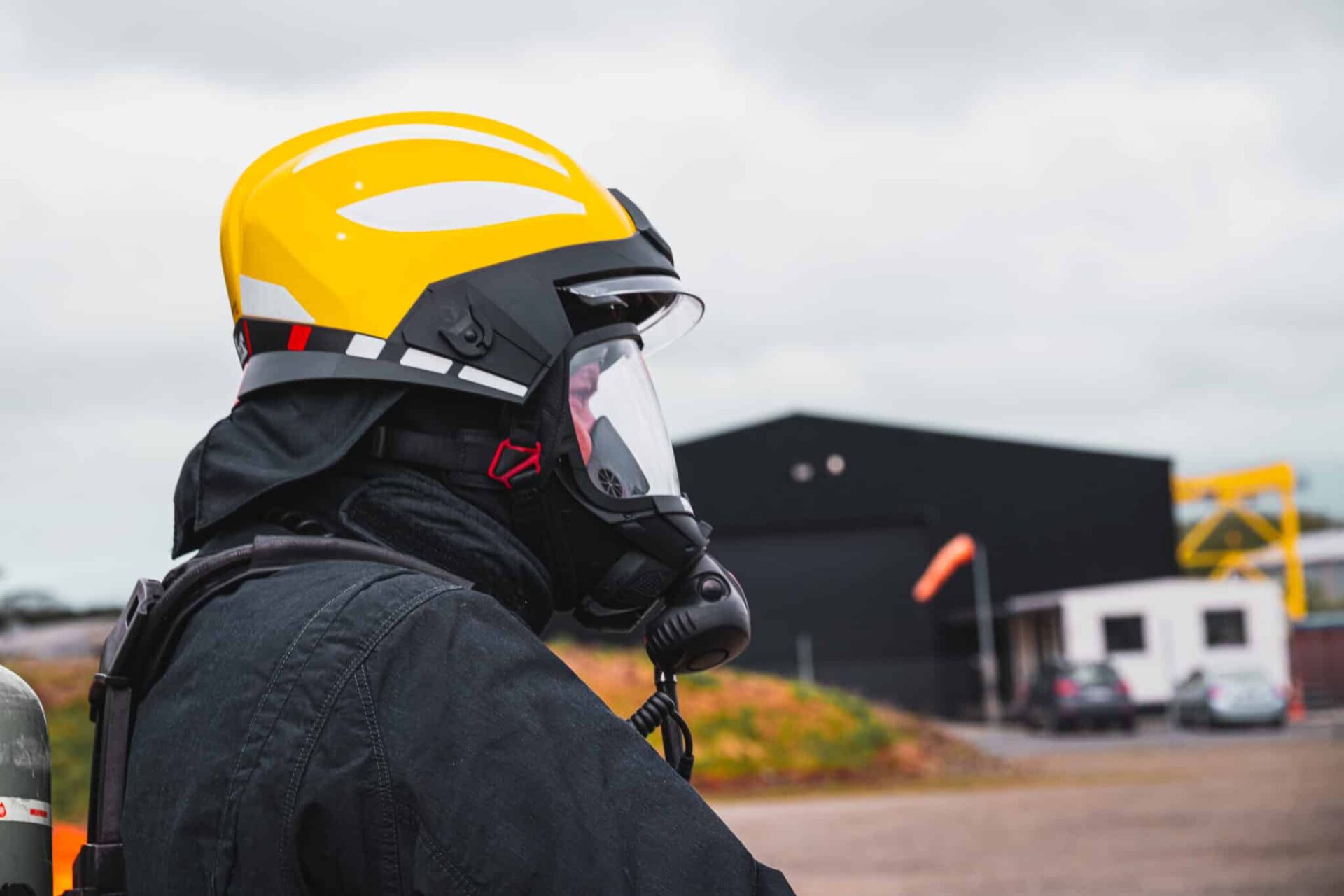Pacific Helmets’ Sales and Development Manager, Lee-Anne Glanville-Rothman, talks aboutHaloflex technology, helmet maintenance and the company’s international ambition
Pacific Helmets was established back in 1982 by David and Marion Bennett with the ambition of getting New Zealand Governments to mandate a safety standard for riding bicycles. David’s passion for safety drove the business forward moving from non-emergency services’ head protection into the realm of emergency services and technical rescue.
The first large scale tender which Pacific Helmets won for structure firefighting helmets was for the London Fire Brigade. This tender was the pivotal point in the company’s manufacturing evolution and the reason it continues to deliver quality products without compromising the end users’ safety.
We spoke to Lee-Anne Glanville-Rothman, Sales Development Manager, at Pacific Helmets to find out about the company’s new products and why “Safety without compromise” is the manufacturer’s mantra that it lives and breathes.
Tell me about your role at Pacific Helmets?
I was born and raised in South Africa and moved to New Zealand in 2017. I’ve always had a knack for technical applications and had developed a good understanding of the technical world when I moved. I joined Pacific Helmets in October 2021 which has served as my introduction into the fire and safety world. It’s been a great challenge and one that I’ve really enjoyed.
My role at the company is Head of Sales, Marketing and R&D. I work with a group that I’m lucky to have in my charge because we go head-to-head with some of the biggest competitors around the globe.
What is Pacific Helmets’ current focus?
We have a new product launching in the first quarter of 2023: the F20, with Haloflex™ technology. Everything in this helmet moves away from your traditional approach of the internal padding and soft components and suspension points. Our focus was full decontamination, ease of use and weight reduction. We’ve spent countless hours reading and listening to the studies which are available and ensured that our pursuit and design addressed as many of the concerns and requirements as possible.
The F20 has a ‘quick clip-in clip-out’ comfort padding system. You can disassemble and reassemble the soft components within 60 seconds. The design focused on ‘tool-free maintenance’ with the components that need to be changed out often. This approach aimed at reducing the necessity of a repair agent servicing the helmet, and the user being without their helmet for a period.
The repair works can be brought inhouse with training provided to guarantee the helmet’s integrity is not compromised. We’ve also reduced the weight of the helmet by 100-150 grams (depending on the standard) and we look forward to hopefully reducing that more in future developments. Haloflex marks the new innovative way forward for our company. We’re wanting to make waves in the industry and we’re going to be incorporating it into more of our product range.
What other new products have you been working on?
In our structural fire range, we have the one touch eye protector (OTEP™). You don’t have to pull it down manually. You push it up and it deploys. There is a small grub screw which allows for height adjustment to suit the individual wearer. The new rescue eye protector (Rescue EP) designed for our R6 rescue range will be available in the first quarter of 2023. The methodology of modular connection provides flexibility to end users to add and replace accessories if and when required. The Rescue EP moves away from the current attachment method towards a ‘retrofit’ which end users can complete themselves or our distributors before shipping the products out. A key focus of the design was adjustability – it’s not just a stationary eye protector. You can shift it forward and back to the wearer’s face, easily accommodating many face shapes and spectacles.
What advice do you have for firefighters with regards to longevity?
It is important to make sure that the chemicals or materials you’re using to clean the helmets comply with the manufacturer’s suggestions. This is normally within a specific pH range and we have that in our user information guides (UIG). We also, depending on the material you have internally for lining, suggest you clean and disinfect your internal soft components in accordance with the UIG or manufacturers guidelines.


